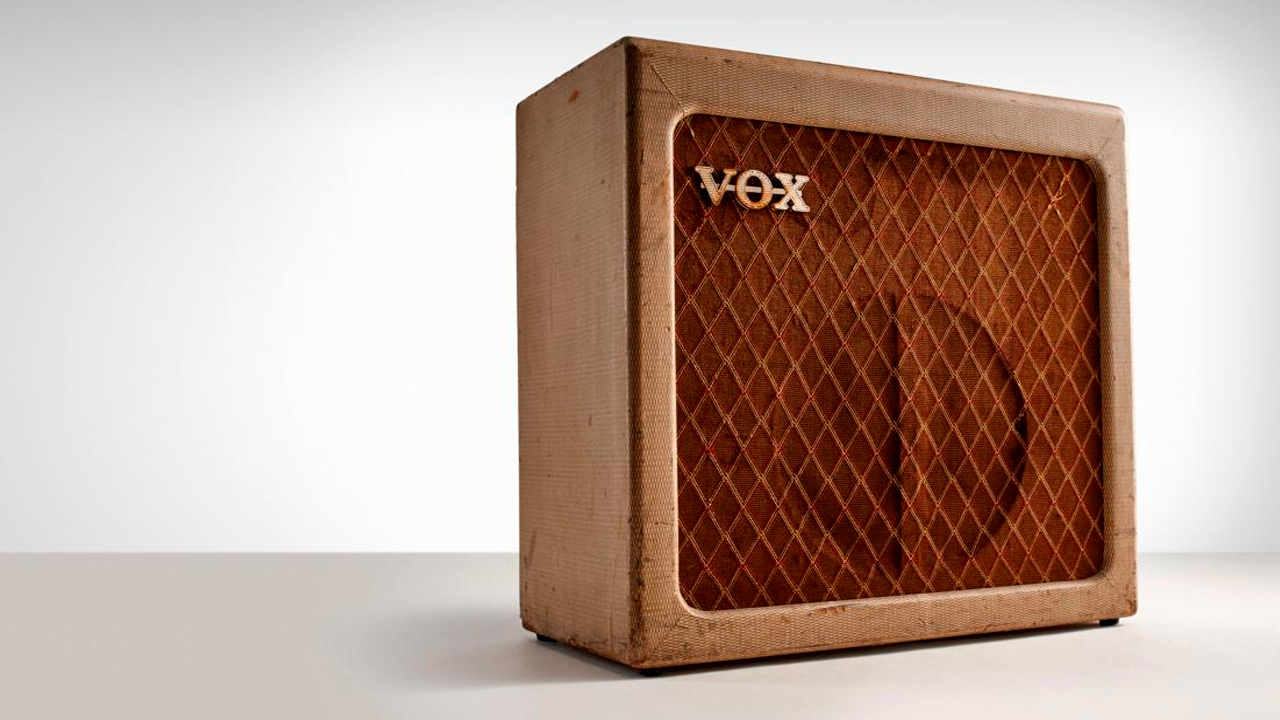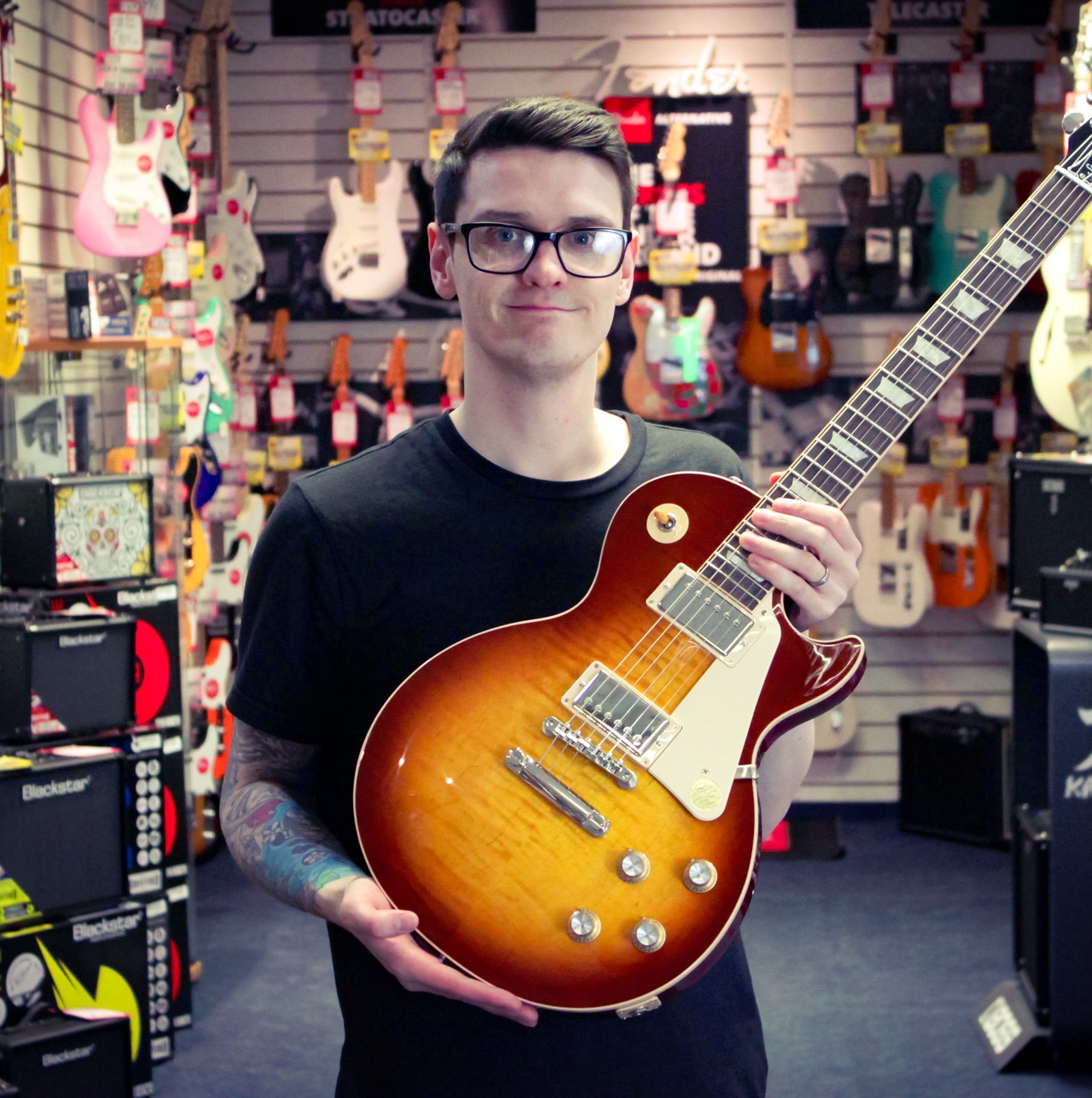Vox AC30 vs Vox AC15: which of these diamond-clad icons should you choose?
You know you want the legendary tone of Vox, but should you splash out on the AC30 or opt for the smaller AC15? Let's find out

Rock 'n' roll's love affair with the Vox AC range runs deep. This legendary series of amplifiers is so profoundly ingrained into the fabric of guitar-based music that it's become part of its DNA. It's fair to say if it wasn't for Vox, many seminal artists would never have found their true voice. If you've thought about adding one of their retro-inspired tube amps to your rig, you've most likely asked yourself the question: "Vox AC30 vs Vox AC15, which is the best option?" Well, hopefully, we'll be able to give you some answers today to help you make an informed decision.
For us at Guitar World, we see Vox as the reigning kings of vintage-voiced combo amps, making the AC30 and AC15 the two shining jewels in their rock 'n' roll crown. So, really you can't go wrong with either amp. That said, both combos have their own unique set of characteristics that allow them to excel in different areas.
We're going to break down the AC's origin, notable players and the main differences that separate these sophisticated combos. So if you are unsure which is the best vox amp for you, you've come to the right place.
Vox AC30 vs Vox AC15: At a glance

Vox AC15C1
- Wattage: 15W
- Speakers: 1 x 12″ Celestion G12M Greenback
- Tubes: 3 x 12AX7/2 x EL84
- Effects: Reverb, Tremolo (Depth and Speed)
- Inputs: Normal/Top Boost
- FX Loop: No
- Dimensions: 23.70” x 10.43” x 17.95”
- Weight: 48.5 lbs
Vox AC30C2
- Wattage: 30W
- Speaker: 2 x 12″ Celestion G12M Greenback
- Tubes: 3 x 12AX7/4 x EL84
- Effects: Reverb (Tone and Level), Tremolo (Depth and Speed)
- Inputs: Normal High/Low, Top Boost High/Low
- FX Loop: Yes
- Dimensions: 27.64” x 10.43” x 21.89”
- Weight: 70.5 lbs
Vox AC30 vs Vox AC15: History

Like so many legendary pieces of music gear – Gibson's fabled bursts, Explorer and Flying V, as well as Fender's offset icon, the Jazzmaster – the Vox AC15 was unleashed on the unexpecting guitar community in 1958. Tom Jennings of Jennings Musical Industries – JMI – saw an opportunity to capitalize on the US trade embargo, recruiting the help of the guitar-playing Dick Denny to fill the amp-shaped hole in the British market.
Upon release, the original amp was actually called the 'AC1/15'. The 'AC' part of the moniker was an attempt to differentiate the new combo from other amps that ran on DC power, which was often noisier and the '1' was to signify it was the first Vox amp produced solely with guitar players in mind. Of course, the '15' represented the 15W of power. This early AC15 came in a cream-colored Rexine covering and the grille was draped with the trademark diamond-patterned cloth, which would go on to be a staple of the brand going forward.
As you can imagine, this amp was a massive success, with British players flocking to get one of these hip modern amps, and well, Vox never looked back, cementing themselves as a part of the foundation in which modern was built.
Famously, Shadows' guitarist Hank Marvin went to Vox seeking more power so he could hear his reverb-soaked guitar lines over Cliff Richard's adoring fans.
While guitarists of the day were initially taken with the AC15, as the popularity of rock 'n' roll grew, so did the crowds. Before long, the plucky AC15 simply couldn't keep up, as players started demanding more volume and headroom from their amps. Famously, Shadows' guitarist Hank Marvin went to Vox seeking more power so he could hear his reverb-soaked guitar lines over Cliff Richard's adoring fans.
The natural solution was for Vox to upgrade the AC15, super-charging the output to an impressive 30 watts. By the spring of 1959, Vox had launched the first of their new models, although this version wasn't exactly how we think of this famous amp today.
This '59 original featured the same 1x12 speaker and square "TV-front" design as its sibling, but it housed a duo of EL34 power valves rather than EL84s. This variant would only last a year and would be replaced by the more recognisable twin-speaker model in 1960.
Vox AC30 vs Vox AC15: Notable players

The list of notable players who turned to the radiant tone of the AC15 and AC30 reads like a who's who of guitar's greatest heroes. When the AC15 first hit the scene, it quickly became a firm favorite of The Beatles, The Rolling Stones, The Kinks and the Yardbirds, among many more – and while all of these bands would later ditch the underpowered 15W variant in favor of its loud and proud next of kin, the AC15 can be heard on many of their early recordings.
Today the Vox AC30 is one of the most widely used tube amplifiers on the market, with acts old and new turning to this famous sound to bring their music to life. Everyone from original heartbreaker Tom Petty to the regal Brian May, U2's The Edge, pop-punk alumni Tom DeLonge and chief Foo Fighter Dave Grohl have been seen on stage with the esteemed diamond grill behind them.
Now, you'd be forgiven for thinking that once the AC30 burst on to the scene, the AC15's time in the limelight was over, but that couldn't be further from the truth. Many players love the lower headroom and pokier sound produced by this single-speaker amp and have come to rely on it in the studio and on stage.
Alt-rock heroes J Mascis and Kevin Shields have been spotted with vintage examples, while Arctic Monkeys' frontman Alex Turner and Kings Of Leon's Caleb Followill are regularly joined on stage with a squad of AC15s.
Vox Ac30 vs Vox Ac15: Differences

Naturally, the main difference between the AC15 and AC30 is the power and, therefore, the volume, but really the differences run a little deeper than that. Yes, the AC30 is significantly louder than its smaller sibling, but this increase in power brings more than just volume to the table.
The mighty AC30 is concealing a quartet of EL84 power tubes, while the AC15 has just two in its power section. This is, of course, where the AC30 gets its strength, but it also contributes to its higher headroom. In short, the AC30 will stay cleaner at higher volumes when compared to the lower headroom of the AC15. This is particularly noticeable in live situations. At gigging levels, the AC30 will stay relatively clean, while the AC15 will be overdriven.
The eagle-eyed among you will have spotted that the AC30 also sports an extra speaker. Both of the standard AC models come loaded with the Celestion G12M Greenback, but the AC30 gets a second speaker to help distribute the additional power.
As you'd expect – and no doubt, demand – both of these Vox combos come with the signature '60s spring reverb built in.
Let's now turn our attention to the less obvious differences between these two amps. The top panel houses the amp's main inputs, with both amplifiers giving you the option to plug directly into the Normal or Top Boost channels, while the AC30 has extra "Low" inputs for both channels.
On the rear of both combos, you'll find the option to hook the AC up to an extension speaker of your choice. However, on the AC30, you'll discover a send and return – also known as an effects loop. This is ideal if you are a big fan of complex delays and lush reverbs.
Speaking of reverb. As you'd expect – and no doubt, demand – both of these Vox combos come with the signature '60s spring reverb built in. That said, the AC30 also includes a handy tone control specifically designed for the reverb. This gives you the ability to darken or brighten the reverb's tone, allowing it to perfect sit in the mix.
Vox AC30 vs Vox AC15: Buying advice

By now, you've probably made your mind up on whether you want the loud and proud AC30 or the single speaker tone machine that is the AC15 – but, in case you're struggling, let's quickly go through the pros and cons of each.
If you are a gigging musician who is seeking a well-rounded amp that's able to handle an impressive range of situations and genres – and takes pedals incredibly well – then the AC30 is the amp for you. The extra tone-shaping abilities of the Vox AC30 are a welcome addition and the added effects loop seals the deal for us. There's a reason this amp has stood the test of time; it absolutely rocks.
However, if you need an on-stage companion for smaller shows or you prefer your tone on the dirtier side, then the AC15 may be more appropriate. The lower headroom of this 15W, single-speaker combo delivers a focused, punchy tone that's clear, crisp, and packs a punch. It may not be as clean as its larger stablemate, but it more than delivers on naturally overdriven tones.
On a quest to find the perfect six-string to pair with your new amp? Check out our buyer's guides for some expert advice
You can trust Guitar World
- Start out right with the best beginner electric guitars
- Got the blues? Check out the best blues guitars
- These are the best electric guitars under $1,000
- Channel Hank and try the best Stratocasters for every budget
All the latest guitar news, interviews, lessons, reviews, deals and more, direct to your inbox!

Daryl is a Senior Deals Writer at Guitar World, where he creates and maintains our 200+ buyer's guides, finds the best deals on guitar products, and tests the latest gear. His reviews have been featured in prominent publications like Total Guitar, Guitarist, Future Music magazine, and MusicRadar.com.
During his career, he has been lucky enough to talk to many of his musical heroes, having interviewed Slash and members of Sum 41, Foo Fighters, The Offspring, Thrice, and more. In a past life, Daryl worked in music retail. For a little under a decade, he advised everyone from absolute beginners to seasoned pros on the right gear for their needs.
Daryl is a fully qualified sound engineer, holding a first-class Bachelor's degree in Creative Sound Production from the University of Abertay.
